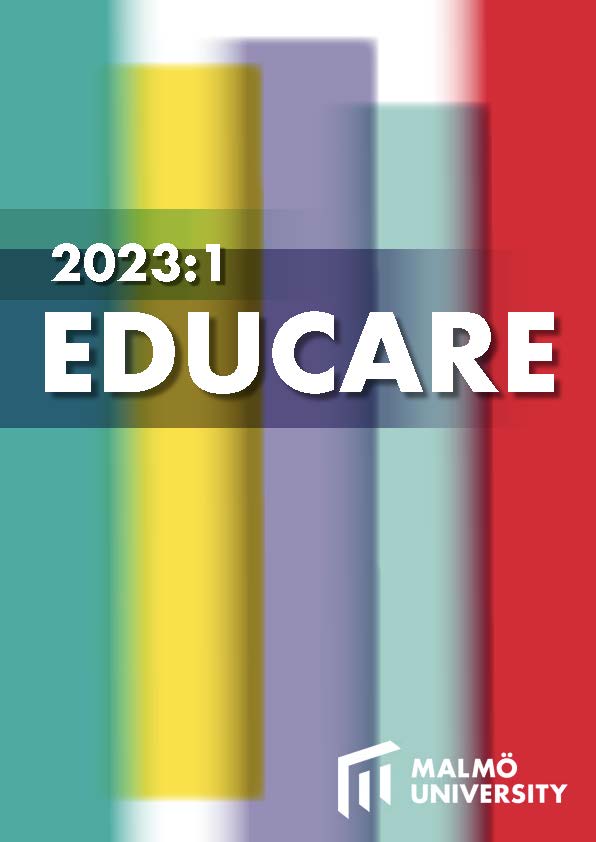Försök till transspråkande undervisning
Tre typpraktiker
DOI:
https://doi.org/10.24834/educare.2023.1.744Keywords:
multilingualism, multilingual teaching practices, practice architectures, study guidance in the mother tongue, translanguagingAbstract
Today many classrooms in Sweden are multilingual, characterized by a diversity of linguistic, cultural and epistemological resources available for teaching and learning. Handling this diversity puts certain demands on teachers in order to provide all students equal learning opportunities in a context where the language of instruction is Swedish. As a response to this, local school development projects based on multilingualism as a resource have been initiated. This study focuses on two such projects with the aim to deepen the knowledge about how translanguaging teaching practices can be developed. To make visible what characterizes as well as enable and constrain translanguaging teaching practices under development, the theory of practice architectures is used. Three different practices are identified The Multilingual, The Ambivalent multilingual and The Monolingual teaching practice. The practices are formed by differing cultural-discursive, material-economic and social-political arrangements. Above all, cultural-discursive arrangements such as norms and ideas affect the differences between the three practices. Existing norms and ideas affect how material and economic resources, mostly identic in all three practices, are used. Furthermore, monolinguistic norms seem to form hierarchical relations. Thus, we argue to develop translanguaging practices multilingual norms are important to develop.
References
Axelsson, F. (2023). Study guidance practices in science with Turkish speaking recently arrived pupils: A study focusing on scaffolding and meaning making. [Doktorsavhandling, Linköpings universitet].
Bagga-Gupta, S., & Messina Dahlberg, G. (2018). Meaning-making or heterogeneity in the areas of language and identity? The case of translanguaging and nyanlända (newly-arrived) across time and space. International Journal of Multilingualism, 15(4), 383–411. https://doi.org/10.1080/14790718.2018.1468446
Berg, G. (2007). RUC i gränslandet mellan akademi och skola. En utvärdering av RUC vid Umeå uni-versitet. (Working Paper in Teacher Education No. 1). Umeå universitet.
Bravo Granström, M. (2019). Teachers’ beliefs and strategies when teaching reading in multilingual set-tings. Case studies in German, Swedish and Chilean grade 4 classroom. Doktorsavhandling, Log-os Verlag Berlin.
Cenoz, J., & Gorter, D. (2020). Teaching English through pedagogical translanguaging. World Englishes, 39(2), 300–311. https://doi.org/10.1111/weng.12462
Charamba, E. (2021). Leveraging multilingualism to support science education through translanguaging pedagogies. I A. Jakobsson, P. Nygård Larsson & A. Karlsson (Red.), Translanguaging in Science Education (s. 257–275). Springer.
Chronaki, A., Planas, N., & Källberg, P. S. (2022). Onto/Epistemic violence and dialogicality in translanguaging practices across multilingual mathematics classrooms. Teachers College Re-cord, 124(5), 108–126. https://doi.org/10.1177/01614681221104040
Cummins, J. (2017). Flerspråkiga elever: Effektiv undervisning i en utmanande tid. Natur & Kultur.
Cummins, J. (2022). Pedagogical translanguaging: Examining the credibility of unitary versus crosslinguistic translanguaging theory. OLBI Journal, 12, 33–55. https://doi.org/10.18192/olbij.v12i1.6073
Fuster, C. (2022). Lexical transfer as a resource in pedagogical translanguaging. International Jour-nal of Multilingualism, 1-21. https://doi.org/10.1080/14790718.2022.2048836
García, O., & Kano, N. (2014). Translanguaging as process and pedagogy: Developing the Eng-lish writing of Japanese students in the US. I J. Conteh & G. Meier (Red.), The multilingual turn in languages education: Benefits for individuals and societies (s. 58-277). Multilingual Matters.
García, O., & Wei, L. (2014). Translanguaging: Language, bilingualism and education. Palgrave Macmillan.
GDPR 2016/679, Dataskyddsförordningen. (2016). Europaparlamentet. https://eur-lex.europa.eu/legal-content/SV/TXT/?uri=celex%3A32016R0679
Hattingh, A., McKinney, C., Msimanga, A., Probyn, M., & Tyler, R. (2021). Translanguaging in science education in South African classrooms: Challenging constraining ideologies for sci-ence teacher education. I A. Jakobsson, P. Nygård Larsson & A. Karlsson (Red.), Translanguaging in Science Education (s. 231–256). Springer.
Karlsson, A., Nygård Larsson, P., & Jakobsson, A. (2019). Multilingual students’ use of translanguaging in science classrooms. International Journal of Science Education, 41(15), 2049-2069. https://doi.org/10.1080/09500693.2018.1477261
Karlsson, A., Nygård Larsson, P., & Jakobsson, A. (2020). The continuity of learning in a translanguaging science classroom. Cultural Studies of Science Education, 15(1), 1-25. http://doi.org/10.1007/s11422-019-09933-y
Karlsson, A., Nygård Larsson, P., & Jakobsson, A. (2022). Transspråkande NO-klassrum: Fler-språkiga vägar till ämneslitteracitet. I A. Jakobsson, P. Nygård Larsson & L. Bergman (Red.), Ämneslitteracitet och inkluderande undervisning (s. 245–278). Studentlitteratur.
Kemmis, S., Wilkinson, J., Edwards-Groves, C., Hardy, I., Grootenboer, P., & Bristol, L. (2014). Changing practices, changing education. Springer.
Källberg, P. S. (2018). Immigrant students’ opportunities to learn mathematics: In(ex)clusion in mathemat-ics education. Doktorsavhandling, Stockholms universitet.
Langelotz, L., Rönnerman, K. & Mahon, K. (2019). Praktikteorier i allmänhet och teorin om praktikarkitekturer i synnerhet. I I. Henning Loeb, L. Langelotz & K. Rönnerman (Red.), Att utveckla utbildningspraktiker: Analys, förståelse och förändring genom teorin om praktikarkitektu-rer (s. 27–43). Studentlitteratur.
Lindberg, I. (2011). Fostering multilingualism in Swedish schools: Intentions and realities. I R. Källström & I. Lindberg (Red.), Young urban Swedish: Variation and change in multilingual set-tings (s. 149–172). Göteborgs universitet.
Lundberg, A. (2019). Teachers’ beliefs about multilingualism: findings from Q method research. Current Issues in Language Planning, 20(3), 266–283. https://doi.org/10.1080/14664208.2018.1495373
Nehez, J., & Blossing, U. (2022). Practices in different school cultures and principals’ improve-ment work. International Journal of Leadership in Education, 25(2), 310–330. https://doi.org/10.1080/13603124.2020.1759828
Norén, E., & Källberg, P. S. (2018). Fabrication of newly-arrived students as mathematical learners. Nordic Studies in Mathematics Education, 23 (3-4), 15–37.
Otheguy, R., García, O., & Reid, W. (2015). Clarifying translanguaging and deconstructing named languages: A perspective from linguistics. Applied Linguistics Review, 6(3), 281–307. https://doi.org/10.1515/applirev-2015-0014
Reath Warren, A. (2017). Developing multilingual literacies in Sweden and Australia: Opportunities and challenges in mother tongue instruction and multilingual study guidance in Sweden and community lan-guage education in Australia. Doktorsavhandling, Stockholms universitet.
Rosén, J., Straszer, B., & Wedin, Å. (2017). Transspråkande i studiehandledning som pedagogisk praktik. Lisetten, 1,16–19.
Rosiers, K. (2016). Unravelling translanguaging: The potential of translanguaging as a scaffold among teachers and pupils in superdiverse classrooms in Flemish education. I B. Paulsrud, J. Rosén, B. Straszer & Å. Wedin (Red.), New perspectives on translanguaging and education (s. 148-169). Multilingual Matters.
Siekkinen, F. (2017). Flerspråkiga elever i en enspråkig elevnorm. Educare 1(17), 27–51. https://doi.org/10.24834/educare.2017.1.3
Svensson, G. (2017). Transspråkande i praktik och teori. Natur & Kultur.
Ünsal, Z., Jakobson, B., Molander, B., & Wickman, P. (2018). Language use in a multilingual class: A study of the relation between bilingual students’ languages and their meaning-making in science. Research in Science Education, 48(5), 1027–1048. https://doi.org/10.1007/s11165-016-9597-8
Van Laere, E., Aesaert, K., & Van Braak, J. (2014). The role of students’ home language in sci-ence achievement: A multilevel approach. International Journal of Science Education, 36(16), 2772–2794. https://doi.org/10.1080/09500693.2014.936327
Weinburgh, M., Silva, C., Smith, K. H., Groulx J., & Nettles J. 2014. The intersection of in-quirybased science and language: Preparing teachers for ELL classrooms. Journal of Science Teacher Education, 25(5), 519–541.
Downloads
Published
How to Cite
Issue
Section
License
Copyright (c) 2023 Jaana Nehez, Annika Karlsson, Petra Svensson Källberg

This work is licensed under a Creative Commons Attribution-NonCommercial 4.0 International License.



